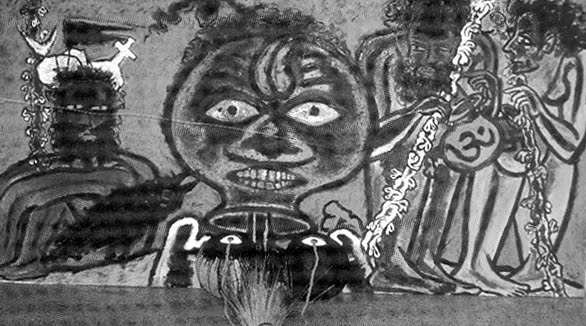-Sakya Mohan-
Many of historians, teachers, activists, atheists, believers, communists and common people from Tamil-speaking Indian State use terms like "Samana" or "Samana Matham" to tamilize "Jaina" or "Jaina Matham" respectively. I have even seen in Face Book group discussions and one person namely Bala has done a good job in posting his recent article on "Samana" monuments in Chittannavaasal in Tamil country contributed by the Buddhist emperors of Kalaparaya Empire. Thanks for your excellent work Bala. But there are a couple of things that we have to know. First it is not "Kalapirar" and the actual name of the rulers who contributed to Chiththannavaasal in Tamil Nadu are "Kalaparayar" (source: Koramangalam Inscriptions). Second important issue of hegemonist historical appropriation of Sakyan culture is identifying the term "samana" with "Jaina" or Jainism. "Samana" is not a Tamil word. It is a Pali terminology meaning someone who follows all Ten Paramitas and Five Precepts (pancasheel) and is able to control the evil (Mara or papa) as recorded in Dhammapada - verse 265 as follows:
"samitattā pāpānaŋ ʻsamaṇoʼ ti pavuccati."
Thus Samana means "someone who has pacified evil is called samana". This is a stage of knowledge towards Nirvana. There is also the stage called "Arhant" and we call it in Tamil as "Arahaththugal" or "Aravanadigal" (see: Silappathigaaram, Manimekalai, Veerasozhiyam, Soolamani, Nilakesi, Seevakasinthamani, Thirikkural, etc. "Samana" (Pali) in Sanskrit is "Shraman" or "Shramana". It is also used in Hindu texts like Taitreya Aranyaka. In Tamil literature, particularly in Periyapuraanam, Thevaaram, Thiruthondarpuraanam and other so-called Bhakti literature, the term "Amana" is widely prevalent meaning those Jains who were undressed or half-dressed.
Coming back to misuse of "samana" for "Jainism" in Tamil writing is to get away from Buddhism. Samana is a movement started by the Buddha to pacify the evils within us and outside. Samana also took part in Jainism and Ajivikam. A Samana in Jainism and Hinduism is a 'performer of austerities' and they also adopted nudism. But in Buddhism a Samana is the one who rejected the Vedas, the Vedics labelled their philosophy as "nastika darsana" (heterodox philosophy).
Beliefs and concepts of Śramaṇa philosophies according to Sakya Tradition in the line of Sakyamuni Buddha:-
1. Denial of creator and omnipotent Gods
2.Rejection of the Vedas as revealed texts that said to be sacred
3.Affirmation of Karma and rebirth, Samsara and transmigration of Soul
4.Affirmation of the attainment of moksa through Ahimsa, renunciation and austerities
5.Denial of the efficacy of sacrifices and rituals for purification
6.Rejection of the caste system and any discrimination as such
But whatever the Tamil hegemonist historians of Tamil saivism and vaishnavism try to upload in their archival preservation and stinky historical stomach is "Samana" is "Jaina" and thus Jainism in Tamil Nadu area is unfortunately "Samana Samayam (religion). At least we need to review the historically wronged "samana-sakya" tradition as "Jainism and we also need to tell the present Tamilist "think-tanks" and future "empty-tanks" that "samana" is not "Jaina". Pandit Ayothidas writes it "Jaina" and "saina" (to tamilize).
Interestingly, the monster killer of 15,000 Buddhists in medieval period, Gnanasambanthan in Thevaram calls us "sakya-samana" and "Heena-Izhikulaththor" and "Siva-virothiyar". I have a separate chapter in my book, "Dalit Kudigalin Marukkappatta Varalaaru" (2003) revealing how and why we were identified as "Sakya-Samanas" and how we were persecuted by the caste-hindus in medieval period.
Omani padme yam! Let's be aware like the bloomed Lotus of the Buddha!

Where can I find the book?
ReplyDelete